The very idea of textured hair reaching back through generations, its curls and coils mirroring the spirals of time, offers a profound doorway into understanding human heritage. To contemplate the ancestral roles of textured hair styles is to peer into a living archive, where each strand holds stories of identity, resilience, and spiritual connection. This is not a mere academic exercise; it is an invitation, a gentle beckoning to listen to the whispers of ancient wisdom carried within the very biology of our hair. For those of us with hair that defies a linear path , that forms its own intricate constellations, this inquiry speaks to a deep, personal truth.
It speaks to the shared history, the communal practices, and the individual expressions that have shaped Black and mixed-race experiences for centuries. Unraveling these roles connects us to something larger than ourselves, a continuum of care and cultural meaning that spans continents and epochs.
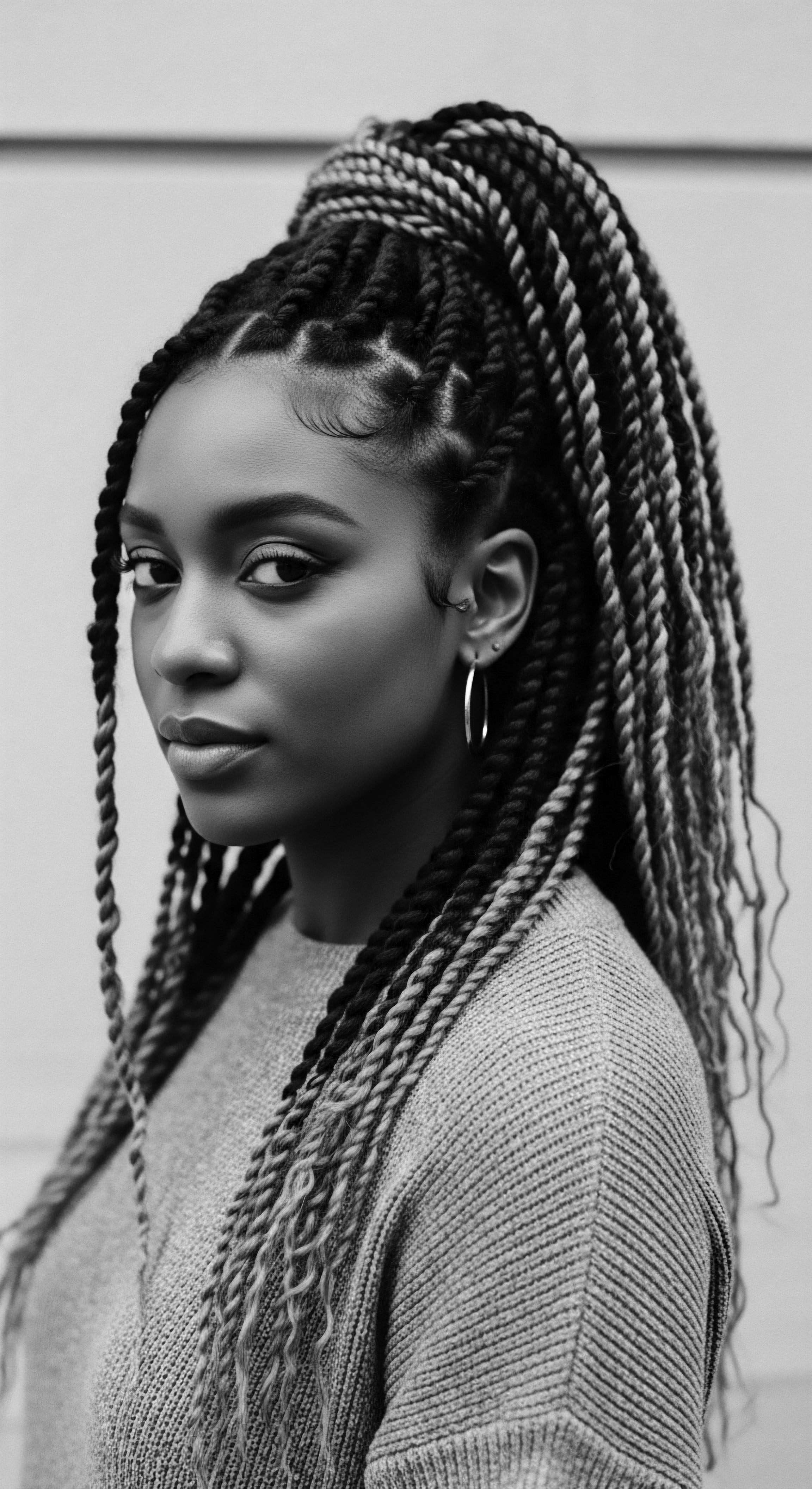
Roots
The journey into the ancestral roles of textured hair styles begins at the source, in the fundamental understanding of hair itself, viewed through the lens of history and scientific heritage. Before modern terminology or products, our ancestors possessed an intuitive, observational science of their hair, passed down through oral traditions and communal practice. The very architecture of Textured Hair, with its elliptical follicle shape and varied curl patterns, is a biological marvel, a testament to deep time and environmental adaptation.
This particular hair type, prevalent among many African populations, as well as groups in parts of Asia and Oceania, is believed to be an ancient evolutionary response, a natural shield against the intense ultraviolet radiation of equatorial suns. It allowed for protective air circulation around the scalp, a sophisticated biological design.
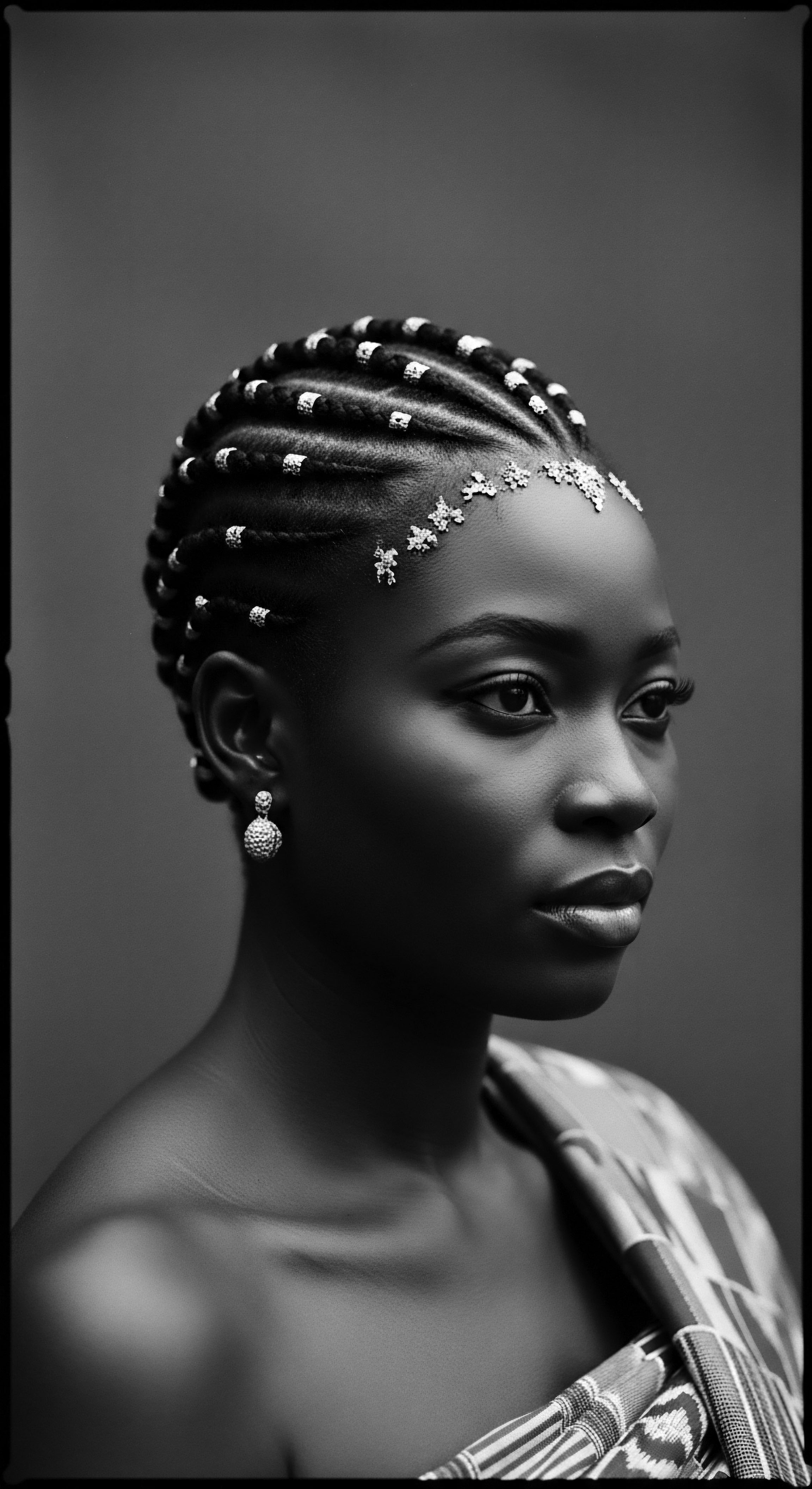
Hair’s Earliest Expressions and Adaptations
From the earliest human civilizations, hair was never simply an epidermal outgrowth; it was a canvas, a statement, a living document. Archaeological evidence, particularly from ancient Egypt and various West African cultures, reveals hair served as expressions of power, spirituality, and social cohesion. This fundamental understanding of hair’s purpose transcended mere adornment. The way hair behaved, its response to moisture, its ability to hold a style, all informed the earliest practices of care and manipulation.
Understanding the basic anatomical distinctions of textured hair – its tendency towards dryness, its natural shrinkage, its strength despite apparent fragility – forms the basis for appreciating the ancestral ingenuity in its care. The inherent characteristics of this hair type dictated the need for specific methods, leading to the development of unique hair care rituals and styling traditions.
The diversity within textured hair is expansive. From the tightly coiling spirals often seen in the Mandingo communities to the more loosely formed curls of the Ashanti, each family of textures responded differently to the environment and inspired distinct styling approaches. This variety meant that traditional practices were localized, evolving to suit the specific hair traits of a community, as well as its environmental conditions and available natural resources.
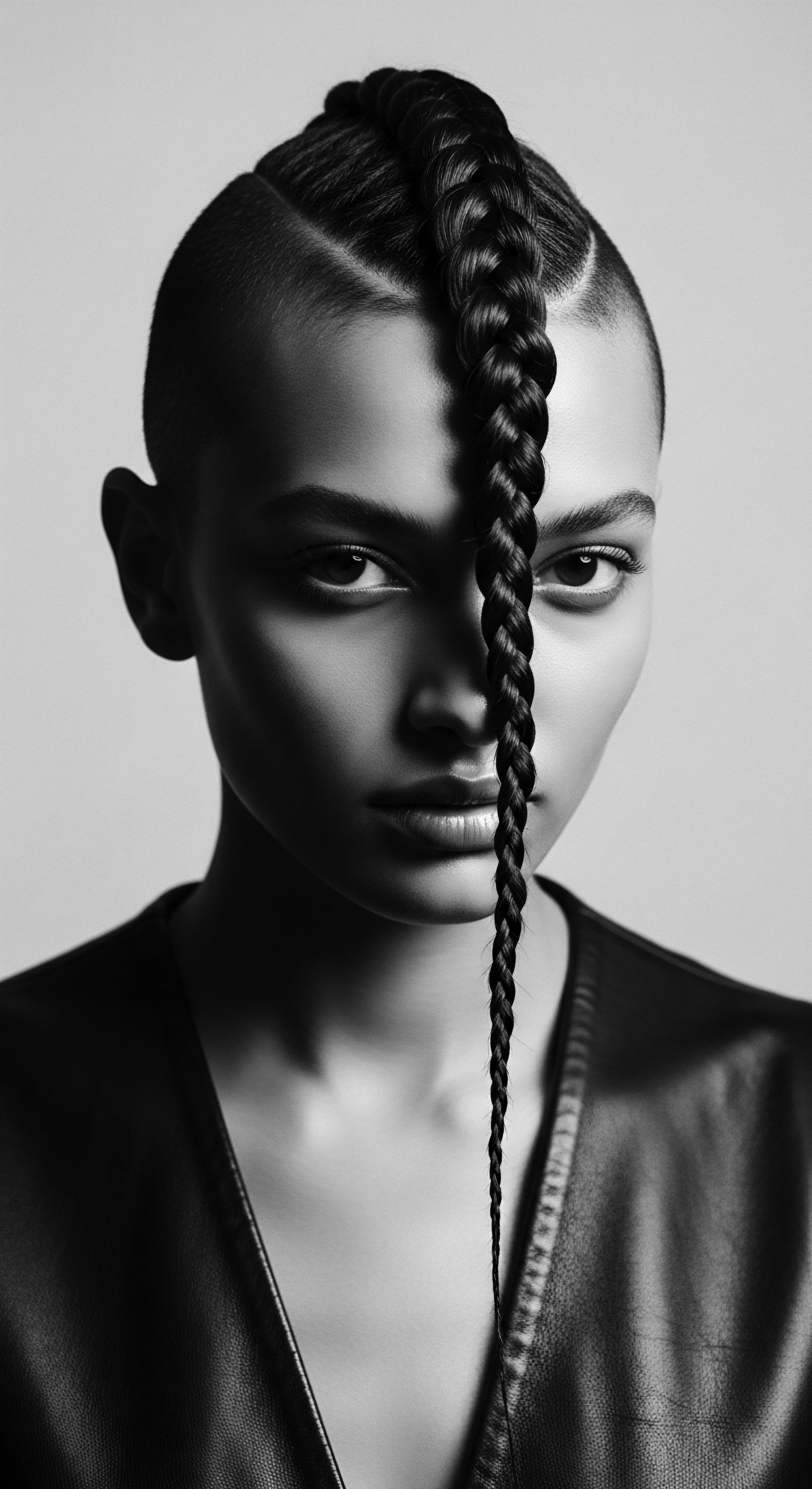
Ancestral Classifications and Their Meanings
Ancestral societies developed their own systems of understanding and classifying hair, though these were not based on follicular cross-sections or scientific scales. Instead, they were deeply rooted in social, spiritual, and communal significance. A person’s hairstyle could instantly communicate a wealth of information. Think of it as a living language, spoken through the crown.
Within West African societies, for example, the specific patterns woven into a person’s hair often communicated their role within the community, identifying their age, tribe, marital status, or even social rank. These were not abstract categories but lived realities, defining an individual’s place and responsibilities within the collective. The care given to hair, the cleanliness and neatness, also spoke volumes about a person’s social standing.
The contours of textured hair, shaped by evolution, became a profound canvas for ancestral societies, broadcasting identity and spiritual connections without uttering a single word.
The Yoruba people of Nigeria, for instance, crafted intricate hairstyles that symbolized community roles, femininity, marriage, and coming-of-age rites. One such style, “Irun Kiko,” a form of thread-wrapping, carried meanings related to readiness for new responsibilities. These systems of meaning were not static; they were dynamic, living traditions that adapted over time, yet always retained their core connection to identity and collective values.
Here is a simplified look at how some traditional hair elements conveyed meaning:
- Placement The specific section of the head where a style began or ended could indicate marital status or readiness for marriage.
- Patterns Intricate geometric or curvilinear patterns, such as those in cornrows, could signify tribal affiliation, lineage, or even serve as maps.
- Adornments The addition of cowrie shells, beads, gold, or other precious materials often reflected wealth, status, or spiritual protection.
- Style Shape Certain shapes, like the raised basket-like form of “Sùkú” among the Yoruba, communicated elegance or respect.
The meticulous care and time invested in these creations highlight their profound significance. Hours, sometimes days, were spent creating these looks, transforming hair styling into a social ritual, a time for bonding and sharing stories within families and communities. This act of communal care reinforced social bonds and a sense of belonging, making hair a testament to collective identity and shared heritage.

Ritual
To speak of textured hair styles is to speak of ritual, a deep, abiding practice that extended beyond mere aesthetics into the very pulse of communal life and the rhythms of spiritual existence. Traditional and modern styling heritage is inextricably linked to the ancestral understanding of hair as a living, sacred entity. This was a concept deeply embedded in many ancient African cultures, where the head, and consequently the hair, was considered the seat of the soul and a primary point of entry for spiritual energy. This belief infused every act of hair care and styling with purpose, transforming it into a ceremonial art, a dialogue between the individual, their community, and the divine.

Protective Styling Beyond Aesthetics
Ancestral protective styling goes far beyond contemporary notions of preserving length or minimizing damage. While those practical benefits were certainly realized, the core purpose was often rooted in spiritual and social protection. Styles like cornrows, braids, and various forms of locs, which shielded the scalp and hair from the elements, also served as tangible expressions of spiritual connection and social identity.
The deliberate intertwining of strands was not simply a physical act; it was a symbolic weaving of communal values, spiritual beliefs, and personal stories. For instance, the Himba tribe in Namibia adorns their dreadlocked styles with red ochre paste, symbolizing their connection to the earth and their ancestors.
During the brutal era of the transatlantic slave trade, the profound cultural importance of hair for African people meant its forced removal by European captors became a deliberate act of dehumanization. Shaving the heads of captives was a way to strip them of their connection to culture and identity. Yet, even in this horrific context, hair became a tool of quiet resistance. Enslaved Africans, particularly women, found ways to reclaim agency.
In Colombia, for example, cornrows were used to secretly convey messages and even map escape routes, with specific patterns representing paths to freedom or safe havens. Rice farmers even braided rice seeds into their hair, a means of survival and preservation of their homeland’s culture. This incredible historical example of resistance, where hair transcended its physical form to become a living blueprint for liberation, profoundly illuminates the deep connection between textured hair heritage and Black experiences. (Washington Post, cited in The Lovepost, 2021)
| Traditional Practice Braiding Ceremonies |
| Ancestral Purpose Rites of passage, social bonding, knowledge transfer |
| Enduring Heritage Link Community gatherings, shared family rituals, cultural preservation today |
| Traditional Practice Hair Adornment |
| Ancestral Purpose Status, wealth, spiritual protection, tribal affiliation |
| Enduring Heritage Link Expression of personal style, celebration of lineage, symbolic embellishment |
| Traditional Practice Protective Styles |
| Ancestral Purpose Spiritual shield, communication, environmental protection |
| Enduring Heritage Link Modern protective styles, recognition of inherent hair needs |
| Traditional Practice These practices, rooted in ancestral wisdom, continue to shape the cultural significance of textured hair. |
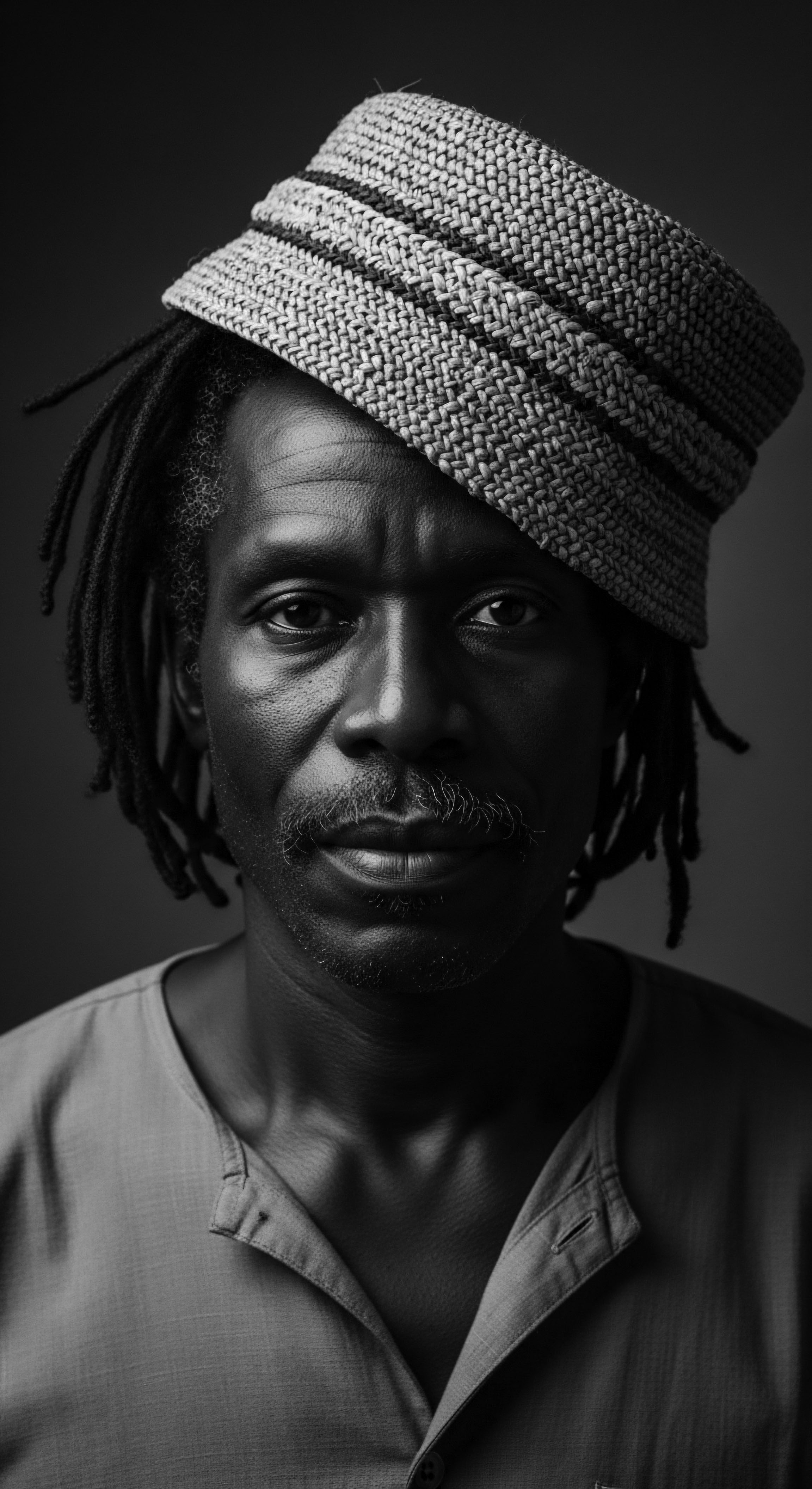
Holistic Care and Nighttime Wisdom
The care of textured hair in ancestral contexts was inherently holistic, recognizing the interconnectedness of body, spirit, and environment. Natural ingredients, often gathered from the local landscape, formed the cornerstone of these care rituals. Oils extracted from plants, butters from nuts, and infusions from herbs were used to cleanse, condition, and protect.
The application of these ingredients was not simply functional; it was often a meditative, grounding practice, connecting individuals to the earth’s bounty and the wisdom of their elders. The very act of grooming became a moment of presence, a tender interaction with one’s physical self and its ancestral lineage.
Nighttime rituals were also paramount. The understanding that hair, especially when left unbound, could become tangled or lose moisture during sleep led to practices designed for preservation. While the modern bonnet may seem like a recent innovation, its spirit echoes ancient methods of wrapping or covering hair to maintain its integrity and protect its spiritual energy.
This wisdom reflects a deep observational knowledge of hair’s needs, applied through practical, consistent routines. It speaks to a deep respect for the hair’s role as a crowning glory, one that deserved dedicated care both day and night.
Hair styling, in its ancestral forms, transcended personal adornment, serving as a conduit for spiritual connection and a silent language within communities.
These rituals extended to significant life events. During naming ceremonies, weddings, or coming-of-age events, hair was styled in very particular, often elaborate ways. Shaving the head could mark a new beginning, perhaps after a birth or during mourning periods, signifying transition and a re-affirmation of spiritual connection.
Such practices highlight hair’s role as a powerful symbol of life’s passages and the cyclical nature of existence. The wisdom of these practices, passed down through generations, underscores the enduring legacy of ancestral hair traditions and their profound influence on identity and well-being.

Relay
The journey of textured hair styles continues, a vibrant relay from the ancient past to the present moment, carrying the profound weight of heritage, resilience, and unwavering cultural expression. To understand the ancestral roles fully, we must recognize how these practices, once integral to daily life and spiritual observance, continue to resonate, often with renewed meaning, within Black and mixed-race communities globally. This continuity speaks to an inherent strength, a refusal to relinquish what was nearly stripped away during periods of immense oppression.
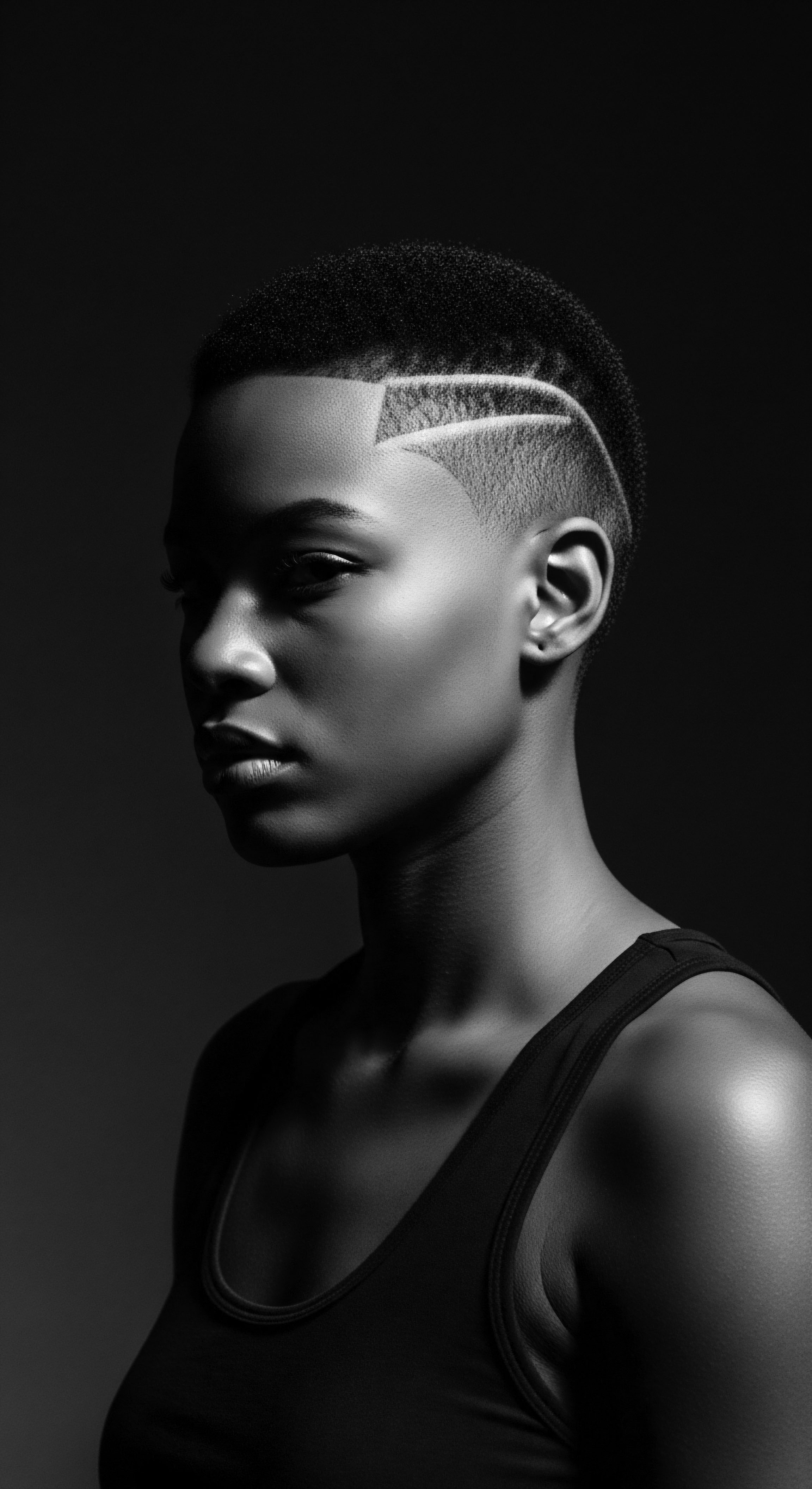
Enduring Symbolism and Modern Expressions
The symbolism embedded in ancestral hair styles has proven remarkably enduring. What once signaled tribal affiliation or marital status now transforms into expressions of Black pride, cultural solidarity, and personal identity. During the Civil Rights and Black Power movements of the 1960s and 70s, for example, the Afro emerged as a potent symbol of Black pride, a direct challenge to Eurocentric beauty standards. Figures like Angela Davis wore their natural hair as a political statement, embracing their African heritage.
A 1972 study in St. Louis showed a dramatic rise in natural styles among Black teens, a small-scale reflection of a larger national trend towards embracing natural texture.
The historical devaluation of Black hair, often a result of centuries of socialization that positioned whiteness as the aesthetic standard, has spurred movements of reclamation. Studies have shown that bias against textured hair persists, with natural styles sometimes perceived as less professional. Despite these challenges, the natural hair movement today is a testament to the persistent power of heritage.
Modern approaches validate and re-contextualize ancient practices. The scientific understanding of hair’s molecular structure and needs now offers new perspectives on the efficacy of long-standing traditional care methods, bridging scientific clarity with ancestral wisdom.

The Interplay of Heritage, Science, and Social Identity
The scientific lens, when applied with reverence for heritage, allows for a deeper appreciation of ancestral ingenuity. Consider the intricate geometry of braiding that has existed for millennia. What early practitioners understood intuitively about hair’s tensile strength, its ability to retain moisture when coiled, and the protective benefits of minimal manipulation, modern science can now explain at a cellular level.
The study of the hair follicle’s elliptical shape and the way keratin proteins arrange themselves in textured hair validates why certain traditional styles, like tightly woven braids or twists, offer optimal protection against breakage and environmental stressors. This intersection of inherited wisdom and contemporary scientific validation creates a powerful narrative of informed care.
Hair salons and barbershops have historically been, and continue to be, vital cultural spaces—centers for community, dialogue, and the transmission of shared heritage. These spaces are living extensions of the communal braiding circles of antiquity, where stories were exchanged, wisdom passed down, and bonds reinforced. The act of styling hair becomes a shared experience, a quiet affirmation of identity and belonging.
The very names of some traditional Yoruba hairstyles, like “Kojusoko” (face your husband) or “Keyinsoko” (turn your back to your husband), tell complex social stories, communicating marital intent or subtle messages within the community. This linguistic connection between hair and social interaction highlights how profoundly styles communicated, transcending mere appearance.
The enduring spirit of textured hair styles is a living relay, connecting ancient wisdom to contemporary expressions of identity and communal pride.
Moreover, the movement towards embracing natural hair textures has also sparked legislative action, such as the CROWN Act in the United States, which prohibits discrimination based on hair texture or protective hairstyles. This legislative effort underscores the deep societal and political dimensions of hair, proving that its significance extends far beyond personal choice, reaching into matters of civil rights and equitable treatment. This demonstrates how the ancestral roles of hair—as a marker of identity, status, and collective belonging—continue to inform contemporary struggles for recognition and respect.
Here are some ways ancestral knowledge influences modern textured hair care:
- Pre-Poo Treatments Many ancient cultures utilized oils and herbs before washing to protect strands, a practice mirrored in modern pre-shampoo treatments designed to minimize stripping natural oils.
- Deep Conditioning The use of nourishing masks and conditioners to restore moisture finds its echo in historical practices of applying natural butters and plant extracts for deep hydration and strength.
- Protective Styling Cycles The ancestral understanding of resting hair through long-term protective styles translates to contemporary recommendations for braids, twists, or cornrows to minimize manipulation and promote growth.
- Scalp Care Traditional remedies often focused on scalp health with botanical infusions, a wisdom reflected in modern scalp treatments and massage techniques to foster a healthy environment for hair growth.

Reflection
To truly grasp the ancestral roles of textured hair styles is to acknowledge a lineage of wisdom, a living, breathing testament to the profound connection between heritage and personal expression. From the spiral geometry of the follicle to the intricate patterns woven by ancestral hands, hair has consistently been a profound storyteller, conveying status, spirit, and belonging across generations. It echoes from the very source of humanity, a biological adaptation that became a cultural cornerstone, shaping communities and marking passages.
The tender thread of communal care, expressed through the shared rituals of styling and adornment, speaks to a deep, collective consciousness. These practices, though ancient, reverberate through every modern wash day, every careful twist, every celebrated natural crown. They remind us that the physical act of hair care carries spiritual weight, a quiet conversation with those who came before. This heritage, resilient and ever-evolving, continues to shape identity, not as a static relic, but as a dynamic, unbound helix, continually re-forming and re-imagining itself in the contemporary world.
Textured hair stands as a vibrant archive, an embodiment of survival and self-determination. Its journey from ceremonial marker to a symbol of resistance, and now to a celebrated expression of authenticity, underscores a legacy of enduring strength. Each curl, each coil, carries the whispers of ancestral roles, a beautiful reminder that our hair is more than just fibers; it is a profound connection to who we are, where we come from, and the vibrant future we continue to shape.
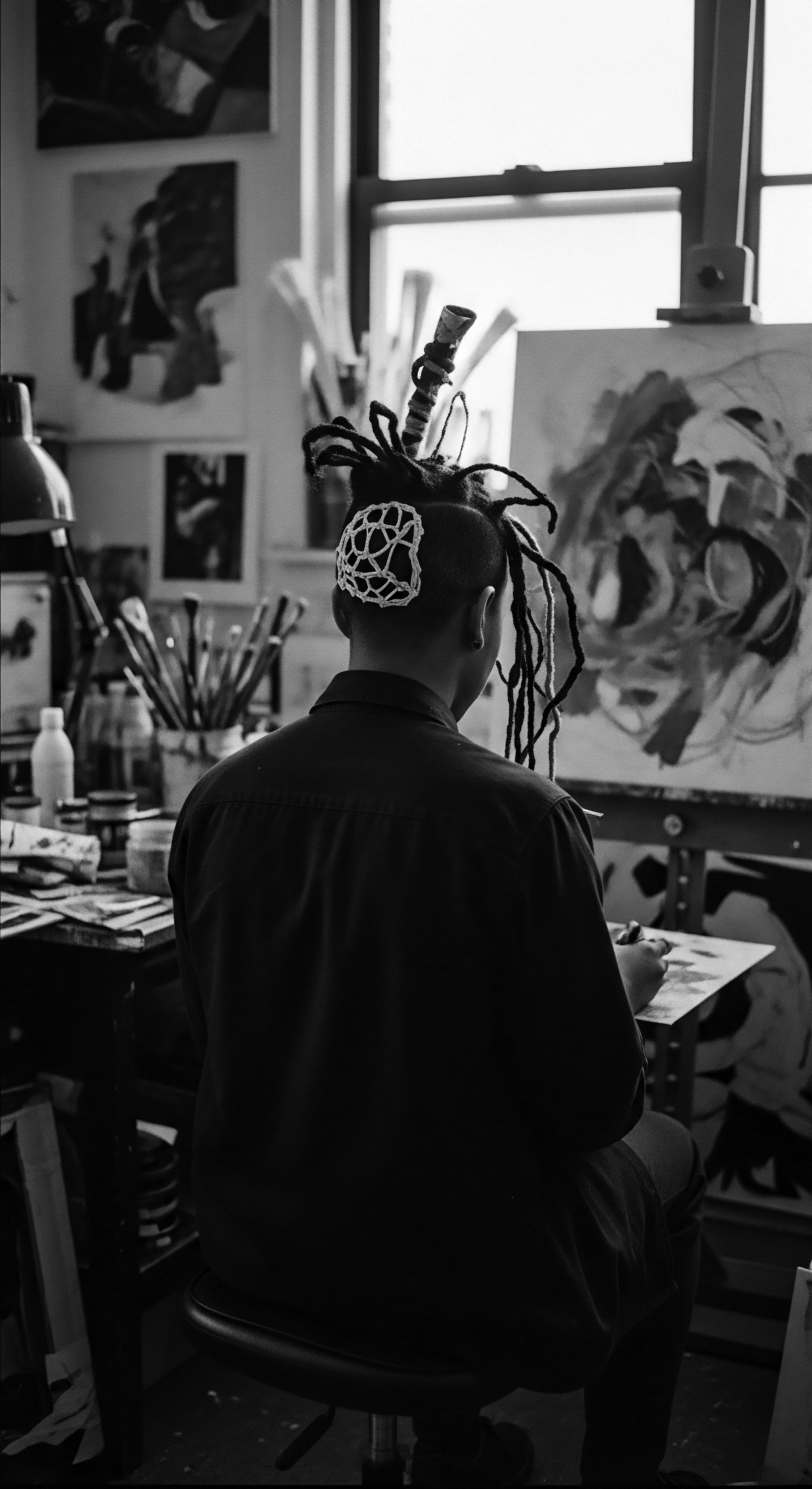
References
- Awe, Bolanle. “Yoruba traditional hairstyles not only for beautification.” News Agency of Nigeria, April 28, 2015.
- Byrd, Ayana, and Lori L. Tharps. Hair Story ❉ Untangling the Roots of Black Hair in America. St. Martin’s Griffin, 2001.
- Marshall, Amandine. “The magic and power of hair in ancient Egypt.” Ancient Egypt, no. 147, February 20, 2025.
- Omotoso, Sharon Adetutu. “Gender and Hair Politics ❉ An African Philosophical Analysis.” Journal of Pan African Studies, 2018.
- Poynor, Robin. African Art at the Harn Museum ❉ Spirit Eyes, Human Hands. University Press of Florida, 1995.
- Sherrow, Victoria. Encyclopedia of Hair ❉ A Cultural History. Greenwood Press, 2006.
- Tharps, Lori L. and Ayana Byrd. Hair Story ❉ Untangling the Roots of Black Hair in America. St. Martin’s Press, 2001.
